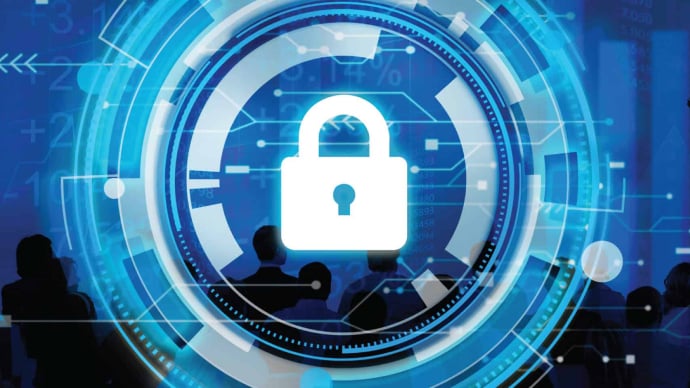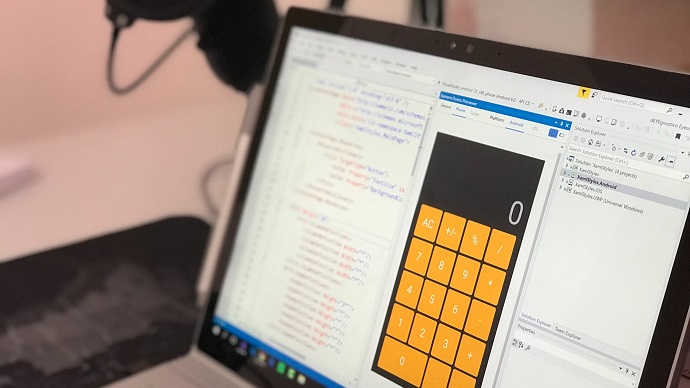
300-715: Implementing and Configuring Cisco Identity Services Engine (300-715 SISE)
PDFs and exam guides are not so efficient, right? Prepare for your Cisco examination with our training course. The 300-715 course contains a complete batch of videos that will provide you with profound and thorough knowledge related to Cisco certification exam. Pass the Cisco 300-715 test with flying colors.

Curriculum for 300-715 Certification Video Course
| Name of Video | Time |
|---|---|
 1. Using Cisco ISE as a Network Access Policy Engine |
4:00 |
 2. Describing Cisco ISE Functions |
5:00 |
 3. Describing Cisco ISE Functions 2 |
3:00 |
 4. Lab Demo Overview of the SISE Lab Environment |
4:00 |
 5. Lab Demo Access the SISE Lab and Install ISE |
5:00 |
 6. Verify ISE Setup Using CLI |
4:00 |
 7. Initial GUI Login and Familiarization |
7:00 |
 8. Disable Profiling |
4:00 |
 9. Certificate Enrollment Part 1 |
9:00 |
 10. Certificate Enrollment Part 2 |
6:00 |
| Name of Video | Time |
|---|---|
 1. Using 802.1X for Wired and Wireless Access |
8:00 |
 2. Using MAC Authentication Bypass for Wired and Wireless Access |
5:00 |
 3. Introducing Identity Management |
5:00 |
 4. Introducing Identity Management 2 |
5:00 |
 5. Configure Active Directory Integration |
10:00 |
 6. Configure LDAP Integration |
5:00 |
 7. Introducing Cisco ISE Policy |
7:00 |
 8. Introducing Cisco ISE Policy 2 |
6:00 |
 9. Add Network Device |
8:00 |
 10. Create Wired and Wireless Policy Sets |
8:00 |
 11. Authentication Policy |
6:00 |
 12. Authorization Policy Part 1 |
7:00 |
 13. Authorization Policy Part 2 |
8:00 |
 14. Wireless Access Authorization Policy Rules |
6:00 |
 15. Creating Global Exception |
6:00 |
 16. Testing Wired Client Access Part 1 |
5:00 |
 17. Testing Wired Client Access Part 2 |
5:00 |
 18. Testing Wireless Client Access |
6:00 |
 19. Introducing Cisco TrustSec |
8:00 |
 20. Configure Access Policy for Easy Connect |
5:00 |
 21. Configure Access Policy for Easy Connect 2 |
10:00 |
 22. Test The Easy Connect Solution |
8:00 |
| Name of Video | Time |
|---|---|
 1. Introducing Web Access with Cisco ISE |
3:00 |
 2. Introducing Web Access with Cisco ISE 2 |
3:00 |
 3. Lab Demo Configure Guest Settings |
6:00 |
 4. Lab Demo Configure Guest Location |
3:00 |
 5. Lab Demo Configure Guest Access with Hotspot Portal 1 |
7:00 |
 6. Lab Demo Configure Guest Access with Hotspot Portal 2 |
7:00 |
 7. Lab Demo Configure Guest Access with Hotspot Portal 3 |
7:00 |
 8. Lab Demo Configure Guest Access with Hotspot Portal 4 |
6:00 |
 9. Lab Demo Configure Guest Access with Guest Self Registration 1 |
9:00 |
 10. Lab Demo Configure Guest Access with Guest Self Registration 2 |
5:00 |
 11. Lab Demo Configure Guest Access with Guest Self Registration 3 |
7:00 |
 12. Enable Self-Registration with Sponsor Approval 1 |
7:00 |
 13. Enable Self-Registration with Sponsor Approval 2 |
7:00 |
 14. Create Guest Accounts as a Sponsor 1 |
7:00 |
 15. Create Guest Accounts as a Sponsor 2 |
6:00 |
 16. Create Guest Accounts as a Sponsor 3 |
4:00 |
 17. Guest Account Management via Sponsor Portal |
4:00 |
 18. Lab Demo Create Guest Reports |
4:00 |
| Name of Video | Time |
|---|---|
 1. Introducing Cisco ISE Profiler |
3:00 |
 2. Introducing Cisco ISE Profiler 2 |
3:00 |
 3. Introducing Cisco ISE Profiler 3 |
2:00 |
 4. Lab Demo Configure Profiling |
7:00 |
 5. Lab Demo Configure Feed Services |
3:00 |
 6. Nad Configuration for Profiling |
4:00 |
 7. Verififcation for NAD Configuration for Profiling |
4:00 |
 8. Examine Endpoint Data |
3:00 |
 9. Creating New Autho Policy with New Logical Profile |
4:00 |
 10. Create a Custom Profile Policy |
7:00 |
 11. Testing Autho Policies with Profiling Data |
5:00 |
 12. Create Cisco ISE Profiling Reports 1 |
4:00 |
 13. Create Cisco ISE Profiling Reports 2 |
5:00 |
| Name of Video | Time |
|---|---|
 1. Introducing the Cisco ISE BYOD Process |
4:00 |
 2. Describing BYOD Flow |
4:00 |
 3. Describing BYOD Flow 2 |
3:00 |
 4. Describing BYOD Flow 3 |
3:00 |
 5. BYOD My Devices Portal Provisioning |
6:00 |
 6. BYOD Provisioning Configuration |
7:00 |
 7. Configuring BYOD Policy Part 1 |
5:00 |
 8. Configuring BYOD Policy Part 2 |
6:00 |
 9. Employee iPad BYOD Registration Part 1 |
7:00 |
 10. Employee iPad BYOD Registration Part 2 |
5:00 |
Cisco SISE 300-715 Exam Dumps, Practice Test Questions
100% Latest & Updated Cisco SISE 300-715 Practice Test Questions, Exam Dumps & Verified Answers!
30 Days Free Updates, Instant Download!
300-715 Premium Bundle

- Premium File: 367 Questions & Answers. Last update: Dec 6, 2025
- Training Course: 73 Video Lectures
- Latest Questions
- 100% Accurate Answers
- Fast Exam Updates
Cisco 300-715 Training Course
Want verified and proven knowledge for Implementing and Configuring Cisco Identity Services Engine (300-715 SISE)? Believe it's easy when you have ExamSnap's Implementing and Configuring Cisco Identity Services Engine (300-715 SISE) certification video training course by your side which along with our Cisco 300-715 Exam Dumps & Practice Test questions provide a complete solution to pass your exam Read More.
Cisco 300-715 SISE Practice Exams: Implementing Cisco ISE Training Course
Implementing and Configuring Cisco Identity Services Engine (Cisco 300-715 SISE)
Course Overview
The Cisco 300-715 SISE exam, also known as Implementing and Configuring Cisco Identity Services Engine, is one of the most important certifications for professionals aiming to strengthen their skills in secure access solutions. Cisco ISE is a comprehensive security policy management platform that enables organizations to enforce access control and identity management across enterprise networks. With enterprises facing constant challenges in securing wired, wireless, and VPN connections, professionals with proven expertise in configuring and implementing Cisco ISE are in high demand.
This training course and practice exam guide is designed to help learners gain the confidence to sit for the Cisco 300-715 exam while simultaneously building practical skills that extend beyond the certification. It covers both theoretical foundations and real-world implementation strategies, ensuring that students do not just memorize exam questions but also understand how to apply Cisco ISE to protect enterprise infrastructure.
Learners are introduced to Cisco ISE components, authentication methods, authorization policies, device profiling, guest access, Bring Your Own Device integration, and troubleshooting methods. Additionally, they practice with exam simulations to familiarize themselves with the actual testing environment, which helps reduce stress on exam day and improves performance. The course is structured to cater to both beginners in network security and experienced professionals looking to validate their expertise.
By following this training, candidates will not only prepare thoroughly for the certification but also be able to translate their knowledge into building stronger, more secure enterprise networks. The Cisco 300-715 SISE practice exams form the backbone of this preparation, offering learners a chance to assess their readiness and identify areas that require additional study.
What You Will Learn from This Course...in Bullets
How to understand the architecture and deployment models of Cisco ISE
Ways to configure authentication and authorization policies for enterprise networks
Practical knowledge of implementing 802.1X authentication on wired and wireless connections
The ability to design and implement secure guest access and BYOD solutions
Skills to configure device profiling and posture assessment for endpoint compliance
Techniques to integrate Cisco ISE with external identity providers and directories
How to use Cisco ISE for TACACS+ administration and role-based access control
Hands-on troubleshooting methods to resolve common Cisco ISE issues
Confidence building through Cisco 300-715 SISE practice exams with exam-style questions
Knowledge to apply Cisco ISE solutions to real-world enterprise challenges
Learning Objectives
The learning objectives of this training program are designed to ensure learners acquire both the conceptual knowledge and hands-on technical ability to succeed in the exam and professional environment. The primary objective is to prepare candidates for the Cisco 300-715 SISE certification exam by systematically guiding them through all exam domains and objectives.
By completing this course, learners will be able to describe the Cisco Identity Services Engine and its functions in enterprise security frameworks. They will understand how authentication, authorization, and accounting services work together to create secure access solutions. The course ensures learners can implement identity-based policies that govern user and device access across different types of networks.
Another key objective is for students to gain confidence in using Cisco ISE features such as guest portals, BYOD onboarding, and integration with third-party services. Learners will also be trained to configure TACACS+ for device management, which is critical for network administrators who need to enforce command-level access control.
The practice exams included in the training aim to help learners identify their strengths and weaknesses, simulate the exam experience, and refine their exam-taking strategy. This approach not only prepares candidates for certification success but also ensures they can confidently apply the skills in day-to-day professional roles.
Target Audience
The Cisco 300-715 SISE training course with practice exams is designed for a wide range of professionals in networking and security. It is particularly suitable for network engineers who are seeking to expand their knowledge in identity management and secure access solutions. Security administrators will also benefit greatly, as the course focuses on policies and practices that directly impact enterprise security.
IT managers and system administrators who are responsible for ensuring compliance and secure network access will find the content relevant to their daily responsibilities. This course is also tailored for professionals working towards the Cisco Certified Network Professional Security certification, since the 300-715 SISE exam is one of its core requirements.
Learners who are aiming to advance their careers in cybersecurity or specialize in identity and access management should consider this training as a stepping stone. The course is equally valuable for consultants who design security policies for organizations, as it provides a deeper understanding of Cisco ISE deployment in diverse environments.
Even individuals who may not yet plan to attempt the exam but want to enhance their technical knowledge of secure access control can use this course as a valuable resource. The inclusion of practice exams ensures that every learner, regardless of experience level, can measure their progress and gain actionable insights into their readiness.
Course Description
This training course is a comprehensive preparation program for the Cisco 300-715 SISE certification exam, focusing on both knowledge acquisition and exam readiness. It begins with a strong foundation in Cisco ISE, guiding learners through its architecture, components, and deployment options. From there, the course dives deeper into authentication protocols such as EAP, PEAP, and 802.1X, explaining how each is implemented within enterprise networks.
The next part of the course explores authorization policies and the role they play in determining what access level users and devices are granted once authenticated. Learners are shown how to implement secure guest access solutions that balance usability with strict security. BYOD integration is also covered extensively, ensuring participants know how to safely onboard personal devices while maintaining enterprise compliance.
Device profiling and endpoint posture assessment form another significant aspect of the course. Learners understand how Cisco ISE automatically identifies and classifies devices, enforcing compliance policies before granting network access. This is a key feature for organizations managing a wide range of connected devices.
The course also covers TACACS+ administration for device management, explaining how administrators can control which commands users are permitted to run on network devices. Integration with external identity providers such as Active Directory or LDAP is demonstrated, showing how Cisco ISE fits seamlessly into broader enterprise ecosystems.
Finally, troubleshooting is addressed with real-world scenarios that help learners practice resolving common challenges in Cisco ISE environments. Throughout the training, students are given practice exams that mimic the real Cisco 300-715 exam format, preparing them to approach the actual test with confidence. Each exam includes detailed feedback and explanations, reinforcing learning and ensuring continuous improvement.
Requirements
To make the most of this training course, learners should come prepared with certain foundational knowledge. A strong understanding of basic networking concepts such as IP addressing, VLANs, and routing is essential. Familiarity with common security concepts, including firewalls, access control, and VPNs, is also recommended.
Learners should have prior exposure to Cisco routing and switching technologies, as these form the underlying platforms where Cisco ISE policies are applied. Access to lab equipment or a virtual lab environment is highly beneficial, as the course places emphasis on hands-on practice.
Participants should also be comfortable with general IT tasks such as installing software, configuring servers, and using command-line tools. Since the course is designed for professionals aiming to work in network security roles, a willingness to engage with technical content and experiment with lab scenarios is crucial.
Prerequisites
While the course is designed to be accessible to a wide audience, certain prerequisites are recommended to ensure learners can follow the material effectively. Candidates should ideally have completed a CCNA-level certification or possess equivalent knowledge of networking principles.
Understanding of AAA concepts, such as authentication, authorization, and accounting, is highly recommended since these form the foundation of Cisco ISE. Prior experience with Cisco security products will give learners an advantage, although it is not mandatory.
Additionally, learners should have a working knowledge of Windows or Linux operating systems, as integration with external identity providers often requires interaction with these systems. Familiarity with Active Directory concepts is also useful, as the course includes demonstrations of integration between Cisco ISE and directory services.
By meeting these prerequisites, learners can ensure they are well-prepared to absorb the material, participate in hands-on labs, and gain the full benefit of practice exams designed to simulate the Cisco 300-715 certification test.
Course Modules/Sections
The training course for Cisco 300-715 SISE is divided into well-structured modules that gradually build knowledge and practical expertise. Each section is carefully designed to address specific aspects of Cisco Identity Services Engine, ensuring learners can move from foundational understanding to advanced implementation skills.
The first module begins with an introduction to Cisco ISE, its architecture, and deployment models. Students learn the roles of policy service nodes, policy administration nodes, and monitoring nodes. By understanding how these components interact, learners are prepared to manage scalable deployments that meet enterprise requirements.
The second module explores authentication policies in depth. Here, learners are introduced to the concept of 802.1X authentication, EAP methods, and MAC authentication bypass. The training explains how to configure Cisco ISE to validate credentials, certificates, and device identity, providing the foundation for secure access.
The third module is dedicated to authorization policies. After authentication, Cisco ISE enforces policies that define what resources users and devices can access. Learners practice building role-based policies and conditions based on identity groups, device type, or compliance status.
The fourth module focuses on guest access solutions. Learners understand the guest lifecycle, from registration to account expiration. The training explores different models such as self-registration portals, sponsor-approved guest accounts, and social media logins, preparing students to design flexible but secure guest experiences.
The fifth module introduces Bring Your Own Device integration. Participants learn how Cisco ISE simplifies onboarding of personal devices while enforcing security policies. The module covers device registration portals, mobile device management integration, and compliance checks.
The sixth module is dedicated to device profiling and posture assessment. Learners see how Cisco ISE identifies devices based on attributes such as MAC addresses, DHCP requests, or RADIUS information. They also configure posture policies that assess whether endpoints meet corporate security standards before granting access.
The seventh module covers TACACS+ administration. This is critical for organizations that need fine-grained control over who can access network devices and what commands they can execute. Learners configure Cisco ISE to provide role-based access for administrators, ensuring accountability and compliance.
The eighth module explains how Cisco ISE integrates with external identity sources like Active Directory, LDAP, and certificate authorities. This section ensures learners can connect Cisco ISE with enterprise directories for seamless authentication and user management.
The ninth module emphasizes troubleshooting skills. Real-world environments often present challenges such as failed authentications or misapplied policies. Learners gain experience using logs, reports, and debugs to resolve issues efficiently.
The final module is dedicated to practice exams and test readiness. Students simulate the real Cisco 300-715 exam environment, answering timed questions and analyzing their performance. This section reinforces theoretical knowledge while sharpening test-taking strategies.
Key Topics Covered
The course covers a wide range of topics that align directly with the Cisco 300-715 SISE exam objectives. These topics are chosen not only to prepare candidates for the certification but also to ensure they can apply their knowledge in professional environments.
One of the key topics is authentication, particularly the use of 802.1X to secure wired and wireless connections. Learners gain an in-depth understanding of protocols such as EAP-TLS, PEAP, and EAP-FAST, along with fallback options like MAC authentication bypass.
Authorization is another major focus. The course explains how to create policies that map authenticated users to appropriate levels of network access. Role-based access control is discussed extensively, ensuring learners can design policies that enforce the principle of least privilege.
Guest access and BYOD integration are highlighted as essential features of modern networks. Students explore workflows for securely onboarding guest users and personal devices without compromising security. These topics are critical for organizations embracing flexible work models and mobility.
Device profiling and endpoint posture assessment form another cornerstone of the course. Learners understand how Cisco ISE automatically identifies devices and enforces compliance checks such as antivirus installation, system updates, or firewall configurations. This ensures only secure devices are granted network access.
TACACS+ administration is presented as a key tool for managing administrative access to routers, switches, and firewalls. Learners configure Cisco ISE to authenticate administrators, authorize commands, and log activities, creating an audit trail that improves accountability.
Integration with external identity providers such as Active Directory and LDAP is also a critical area of study. By learning how to connect Cisco ISE with existing enterprise directories, students gain the ability to build seamless authentication workflows across the organization.
Troubleshooting is another major topic. The course emphasizes using Cisco ISE logs, diagnostic tools, and packet captures to investigate failed authentications or policy misconfigurations. Troubleshooting skills not only help candidates succeed on the exam but also ensure they are valuable assets in real-world deployments.
The practice exams included in the training cover all these key topics. By testing themselves on authentication, authorization, guest access, device profiling, TACACS+, integration, and troubleshooting, learners build a comprehensive understanding of the exam blueprint.
Teaching Methodology
The teaching methodology of this course is designed to provide a balance between theoretical learning and practical application. The approach ensures learners do not simply memorize information but develop the ability to apply concepts in real-world scenarios.
The first element of the methodology is instructor-led explanations. Learners are introduced to concepts through structured lessons that explain Cisco ISE features, deployment models, and configuration steps. These explanations are reinforced with diagrams, flowcharts, and examples to make complex topics easier to grasp.
The second element is hands-on practice. The course places strong emphasis on lab exercises, where learners configure Cisco ISE in simulated environments. By practicing authentication policies, guest access portals, and TACACS+ configurations, learners gain practical experience that reinforces theoretical knowledge.
Practice exams form the third element of the methodology. Students attempt timed tests that replicate the Cisco 300-715 exam format. These practice exams help learners identify weak areas, improve time management, and reduce anxiety by providing familiarity with question styles.
Interactive discussions and case studies form another part of the teaching methodology. Learners analyze real-world scenarios, such as onboarding thousands of devices in a university network or securing guest access in a corporate environment. These discussions help bridge the gap between theory and practice.
Feedback and evaluation are also critical. After each module, learners receive feedback on their progress through quizzes, lab assessments, and exam simulations. This continuous evaluation allows them to adjust their study strategies and focus on areas needing improvement.
The blended approach of lectures, labs, exams, and feedback ensures a holistic learning experience. It caters to different learning styles and prepares learners not only to pass the Cisco 300-715 exam but also to apply Cisco ISE solutions in professional roles.
Assessment & Evaluation
Assessment and evaluation play a central role in preparing learners for the Cisco 300-715 SISE certification. The course incorporates multiple assessment methods to ensure students are developing both theoretical knowledge and practical skills.
Module quizzes are used after each section to test immediate understanding of key concepts. These quizzes reinforce learning by requiring students to recall and apply information shortly after it is introduced.
Hands-on lab exercises serve as another form of assessment. By configuring Cisco ISE features in simulated environments, learners demonstrate their ability to apply theoretical knowledge. Instructors can evaluate lab work to identify whether learners are ready for more advanced topics.
Practice exams are perhaps the most important evaluation tool. These exams simulate the Cisco 300-715 testing environment, with timed questions that reflect the difficulty and style of the actual exam. After completing a practice exam, learners receive detailed feedback that highlights areas of strength and weakness.
Performance analysis is integrated into the evaluation process. Learners track their progress over time, identifying trends and patterns in their practice exam results. This allows them to focus their study efforts on specific domains, such as authentication or device profiling, where improvement is needed.
Peer discussions and group evaluations are also used in some training formats. Learners share their approaches to solving problems, compare strategies, and learn from one another. This collaborative approach encourages deeper understanding and critical thinking.
By combining quizzes, labs, practice exams, and performance analysis, the course ensures that learners are thoroughly evaluated at every stage of their preparation. The goal is not only to prepare candidates for certification but also to confirm that they can apply Cisco ISE knowledge confidently in real-world deployments.
Benefits of the Course
The Cisco 300-715 SISE training course, supported by comprehensive practice exams, offers a wide range of benefits to learners, professionals, and organizations. At its core, the course not only prepares individuals to succeed in the certification exam but also equips them with knowledge and skills that directly impact real-world security practices. The following benefits highlight why this training is a valuable investment.
One of the primary benefits is enhanced understanding of identity-based networking. In today’s environment, securing networks is no longer just about protecting the perimeter. Organizations need to ensure that every user and device is properly authenticated and authorized before gaining access. Through this course, learners develop the ability to design, implement, and maintain identity services using Cisco ISE, giving them a competitive edge in the job market.
The course also provides structured preparation for the Cisco 300-715 exam. Certification candidates often struggle with understanding exam blueprints or finding the right resources. This training simplifies the process by presenting content in logical modules, aligning learning directly with exam objectives. Learners gain exposure to real exam-like practice questions, which builds familiarity with test formats and reduces anxiety on exam day.
Another benefit is the development of practical, hands-on skills. The inclusion of lab exercises means learners go beyond theory to apply their knowledge in simulated environments. By working through configurations, policies, and troubleshooting exercises, learners develop the kind of confidence that cannot be gained through reading alone. This practical experience makes them more effective in professional roles and improves their problem-solving skills.
Career advancement is another key advantage. The Cisco 300-715 SISE certification is highly regarded in the industry and forms part of the CCNP Security track. Holding this certification signals to employers that the individual possesses specialized expertise in secure access control and identity management. This often leads to promotions, new job opportunities, or higher salary prospects.
Organizations also benefit from having employees trained in Cisco ISE. With cyber threats constantly evolving, companies need skilled professionals who can implement policies to protect sensitive data. Trained staff members can reduce the risk of security breaches by ensuring that only compliant devices and authenticated users are allowed access. This strengthens the organization’s overall security posture and compliance with industry regulations.
Another significant benefit is adaptability to modern workplace challenges. As remote work and mobile device usage increase, enterprises must balance security with user convenience. Cisco ISE enables flexible yet secure access solutions for guests, employees, and contractors. Learners trained in this course gain the ability to configure BYOD policies, design guest portals, and integrate with third-party systems, making them valuable assets in dynamic environments.
In addition to technical and career-related benefits, the course also offers personal growth advantages. Learners develop a structured approach to problem solving, improve their analytical thinking, and gain confidence in handling complex security scenarios. The discipline required to prepare for the exam and complete practice tests translates into improved learning habits that benefit professionals throughout their careers.
Finally, the course fosters community engagement. Many learners participate in study groups, online forums, or peer discussions while preparing for the exam. This allows them to share knowledge, clarify doubts, and build professional networks. These connections can prove valuable for career growth, collaboration, and continued learning even after the certification is achieved.
Course Duration
The duration of the Cisco 300-715 SISE training course varies depending on the learning format, individual pace, and availability of resources. On average, a structured training program is designed to be completed in several weeks, ensuring learners have enough time to absorb the material, practice in labs, and take multiple practice exams.
Instructor-led training courses typically span five to seven days of intensive learning. These bootcamp-style programs are designed for learners who prefer guided study and wish to complete their preparation quickly. Each day covers multiple modules, blending lectures with hands-on labs to ensure comprehensive understanding within a short period. While intensive, this format requires learners to dedicate full-time hours during the training.
Self-paced online training programs usually extend over a longer period, often ranging from four to eight weeks. Learners have the flexibility to study at their own pace, making it easier to balance training with professional or personal commitments. This format is ideal for individuals who prefer reviewing material multiple times or need additional practice before feeling confident for the exam.
Some learners choose hybrid formats that combine instructor-led sessions with self-paced study. For example, they may attend a live workshop for core modules and then continue practicing through online labs and practice exams over several weeks. This blended approach offers both structure and flexibility, catering to different learning preferences.
The actual study time required also depends on prior experience. Learners with a strong background in networking and security may need fewer weeks of preparation, focusing mainly on exam-specific topics and practice questions. On the other hand, beginners in Cisco ISE may require additional time to grasp foundational concepts before advancing to complex configurations.
It is recommended that learners allocate a minimum of 10 to 15 hours per week for study and practice. This includes reviewing lessons, completing labs, and attempting practice exams. Regular, consistent study sessions are more effective than cramming, as they allow knowledge to consolidate over time.
Practice exams play a crucial role in managing course duration. By taking timed tests at intervals, learners can measure progress and decide whether they need additional preparation. For instance, if a learner scores significantly lower in topics like TACACS+ administration or device profiling, they can dedicate more time to those areas before scheduling the actual certification exam.
On average, most candidates complete their preparation for the Cisco 300-715 SISE exam within six to ten weeks of focused study. This timeframe allows for thorough understanding of all modules, adequate practice in labs, and repeated attempts at practice exams to ensure readiness. However, the duration can be shortened or extended based on individual needs and commitments.
Ultimately, the course duration is flexible and adaptable. The goal is not just to finish quickly but to ensure complete mastery of Cisco ISE concepts and confidence in tackling the exam. Learners are encouraged to create a realistic study plan that aligns with their schedule, learning style, and career goals.
Tools & Resources Required
To successfully complete the Cisco 300-715 SISE training course and practice exams, learners need access to specific tools and resources. These resources enable them to study theoretical material, practice configurations, and simulate exam conditions effectively.
One of the most important resources is a reliable lab environment. Cisco ISE is a complex system that requires hands-on practice for full understanding. Learners can set up physical labs using Cisco hardware, but many opt for virtual labs to reduce cost and complexity. Virtual environments allow learners to practice configurations on Cisco ISE virtual appliances, switches, and routers without requiring large investments in physical devices.
In addition to lab access, learners need access to official Cisco documentation. Cisco provides detailed configuration guides, deployment manuals, and troubleshooting resources that are invaluable during study. Referring to official documentation ensures learners are studying accurate and up-to-date material that aligns with the exam objectives.
Practice exams are another essential resource. High-quality practice questions that reflect the structure and difficulty of the real exam are critical for effective preparation. These practice exams help learners become familiar with the exam format, improve time management, and assess their readiness before attempting the actual certification.
Video tutorials and online courses provide additional support. Many learners benefit from step-by-step demonstrations of configurations and policies. Videos offer a visual representation of how Cisco ISE functions, making complex topics easier to understand. Combining video learning with hands-on labs creates a more comprehensive learning experience.
Books and study guides are also valuable. Several Cisco Press publications cover the Cisco 300-715 exam objectives in detail, providing explanations, examples, and review questions. These books can serve as reference material during study and continue to be useful after certification.
Collaboration tools such as online forums, study groups, and discussion boards are recommended for learners who thrive on peer interaction. Sharing knowledge with others helps reinforce learning and provides access to different perspectives on problem solving. Many learners find study groups motivating and effective in maintaining accountability.
Additional technical tools may include virtualization software like VMware Workstation or VirtualBox, which are often required to set up Cisco ISE virtual appliances. A computer with sufficient processing power, memory, and storage is necessary to run virtual labs smoothly. Access to networking tools such as packet analyzers or terminal emulators can also enhance the lab experience.
Reliable internet access is another critical resource. Much of the course material, including online labs, video tutorials, and practice exams, requires a stable connection. Internet access also allows learners to explore Cisco’s online resources, knowledge bases, and community forums for additional support.
Time management tools such as study planners or exam preparation apps can help learners organize their schedule. By setting daily or weekly goals, learners can track progress and ensure they allocate sufficient time to each module. These tools are especially useful for self-paced learners who need structure in their study routines.
Finally, motivation and discipline are intangible yet essential resources. While tools and labs provide the environment for learning, success in the Cisco 300-715 SISE course depends on consistent effort and focus. Learners who remain committed, practice regularly, and review their progress are the most likely to achieve certification success.
Career Opportunities
Completing the Cisco 300-715 SISE training course and earning the certification opens a wide range of career opportunities for networking and security professionals. Organizations across industries rely on secure access and identity services to protect their networks, making certified professionals valuable assets in today’s workforce.
One of the most common roles for certified individuals is network security engineer. These professionals are responsible for implementing, managing, and troubleshooting secure access solutions in enterprise networks. With Cisco ISE as a core platform, security engineers ensure that every user and device is properly authenticated and authorized before gaining access to company resources.
Another role is identity and access management specialist. This position focuses on designing and maintaining systems that control who can access applications, data, and services. Professionals with Cisco 300-715 SISE certification are well-prepared to handle complex identity workflows, integrate with external providers, and enforce compliance policies.
System administrators and IT security administrators also benefit from this certification. Their daily responsibilities include managing user access, maintaining secure configurations, and responding to incidents. Cisco ISE knowledge allows them to strengthen organizational defenses while ensuring smooth and compliant access for employees, guests, and contractors.
Many professionals also advance into roles such as security consultants or solutions architects. These roles require designing large-scale security architectures for organizations, often integrating multiple Cisco security solutions. The ability to configure Cisco ISE, manage guest access, and implement BYOD policies provides a competitive advantage in these high-level positions.
Certified professionals also become strong candidates for specialized positions within industries that prioritize compliance, such as healthcare, finance, and government. These sectors demand strict identity verification and access control measures, which Cisco ISE is designed to deliver.
From a career development perspective, the Cisco 300-715 certification also serves as a stepping stone toward more advanced Cisco credentials, including CCNP Security and eventually CCIE Security. Each certification builds on the previous one, allowing professionals to deepen their expertise and qualify for senior-level roles with higher salary potential.
In terms of salary expectations, professionals who hold the certification often enjoy significant advantages. With employers recognizing the specialized skills required to manage Cisco ISE deployments, certified individuals can expect competitive compensation and greater job stability.
The global demand for cybersecurity professionals continues to grow, and identity and access management is at the heart of this demand. By completing the Cisco 300-715 SISE course and certification, learners position themselves to take advantage of expanding opportunities and long-term career growth.
Enroll Today
Enrolling in the Cisco 300-715 SISE training course with practice exams is the first step toward mastering secure access solutions and advancing your career in network security. Whether you are preparing for the certification exam or seeking to strengthen your professional expertise, this course offers the guidance, resources, and support needed to succeed.
Enrollment provides immediate access to structured learning modules that cover Cisco ISE architecture, authentication, authorization, guest access, BYOD, device profiling, TACACS+ administration, and troubleshooting. With each module reinforced by lab exercises and practice exams, learners gain both the theoretical knowledge and the practical skills required for real-world application.
By enrolling today, you will also benefit from practice exam simulations that closely mirror the format and difficulty of the actual Cisco 300-715 test. These practice sessions are designed to boost your confidence, sharpen your exam strategy, and help you identify areas that need additional focus before exam day.
Learners receive access to tools and resources that support flexible study schedules. Whether you prefer instructor-led sessions, self-paced study, or a blended format, enrollment options are available to match your learning style. Online resources, official documentation, and community discussions further enrich the learning experience.
Enrolling now also connects you with a community of professionals who are pursuing the same certification goals. Networking with peers allows you to share insights, exchange problem-solving strategies, and gain motivation throughout your preparation journey.
The demand for skilled security professionals is at an all-time high, and Cisco ISE expertise is one of the most sought-after skills in the industry. By taking action today, you move closer to securing new career opportunities, advancing within your organization, and achieving professional recognition.
Start your journey by enrolling in the Cisco 300-715 SISE training course and practice exams. Equip yourself with the knowledge, confidence, and credentials needed to succeed in the exam and thrive in your career.
Prepared by Top Experts, the top IT Trainers ensure that when it comes to your IT exam prep and you can count on ExamSnap Implementing and Configuring Cisco Identity Services Engine (300-715 SISE) certification video training course that goes in line with the corresponding Cisco 300-715 exam dumps, study guide, and practice test questions & answers.
Purchase Individually



Cisco Training Courses




















Only Registered Members can View Training Courses
Please fill out your email address below in order to view Training Courses. Registration is Free and Easy, You Simply need to provide an email address.
- Trusted by 1.2M IT Certification Candidates Every Month
- Hundreds Hours of Videos
- Instant download After Registration






